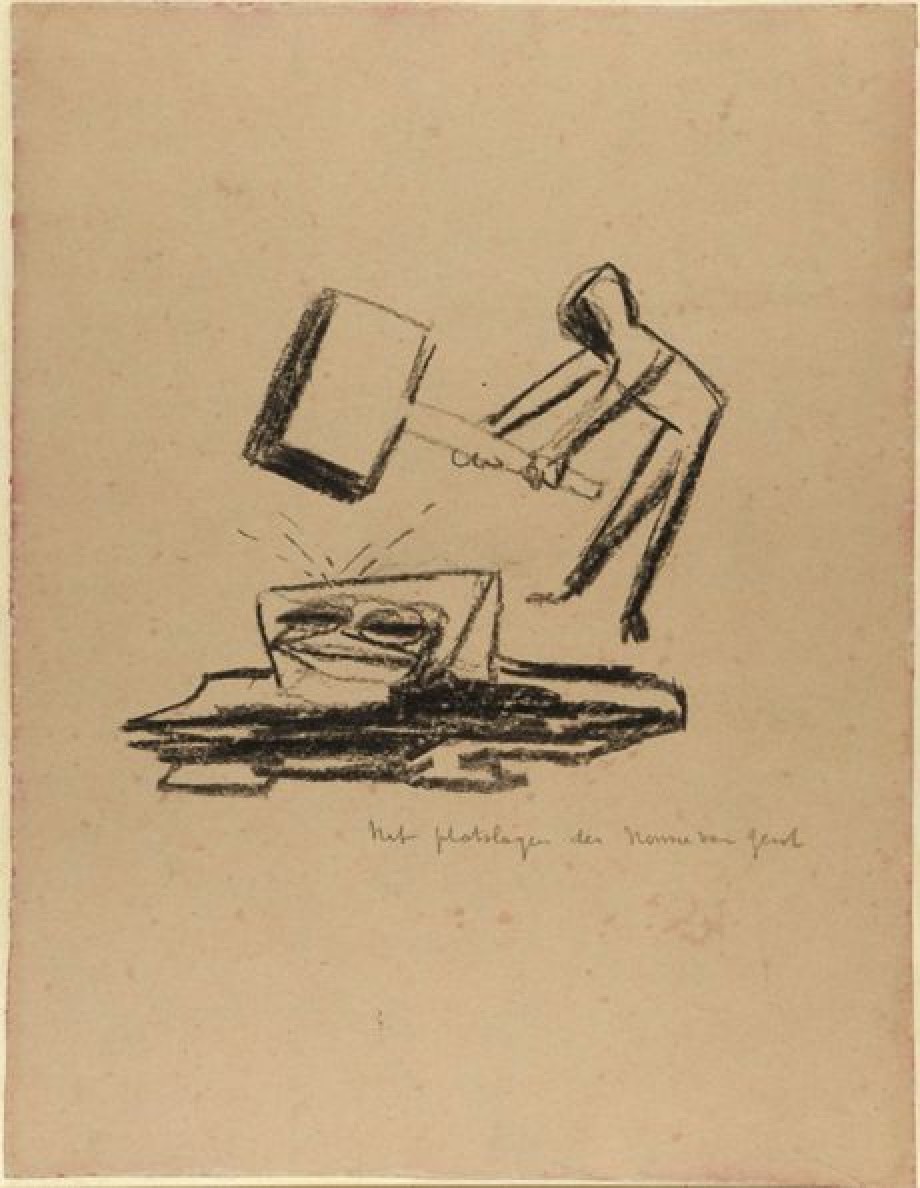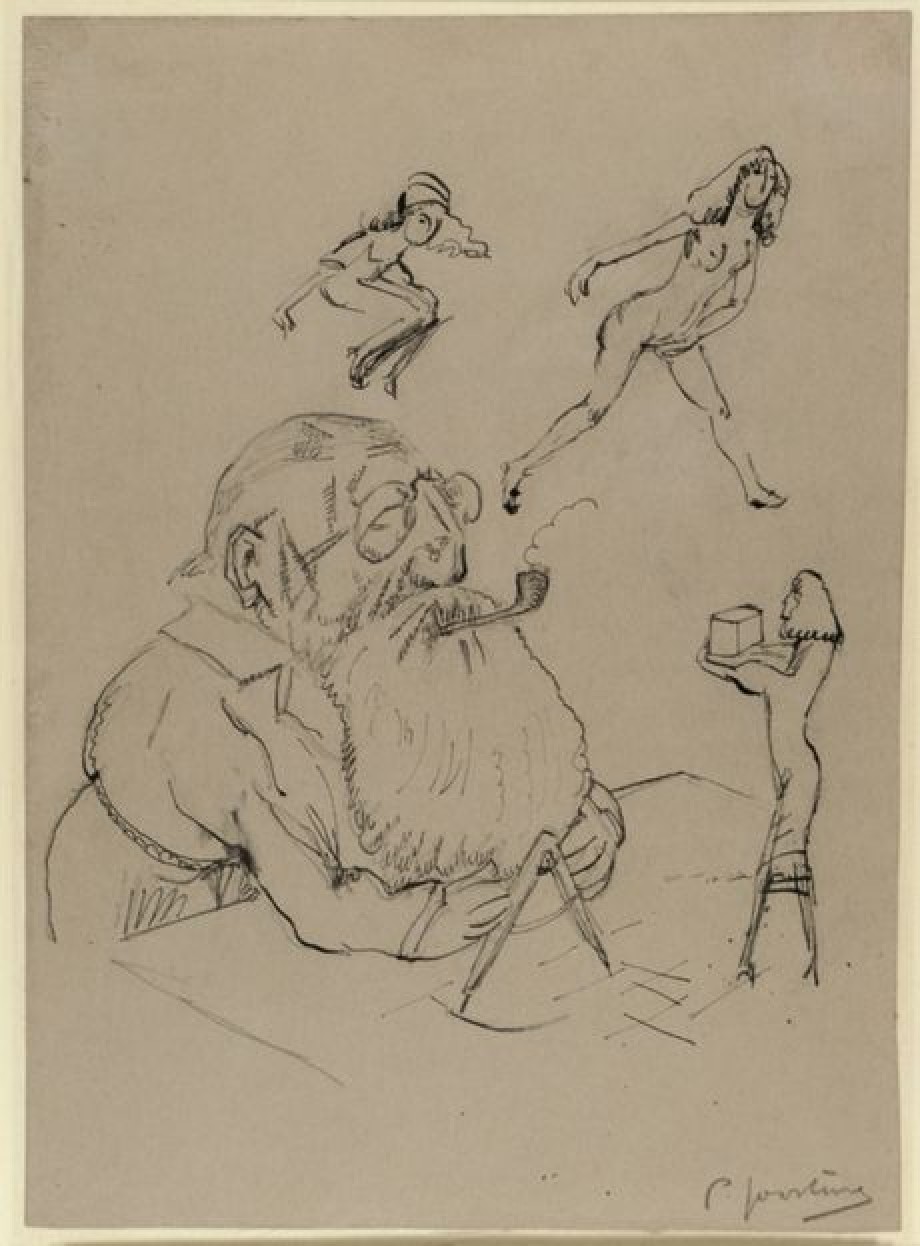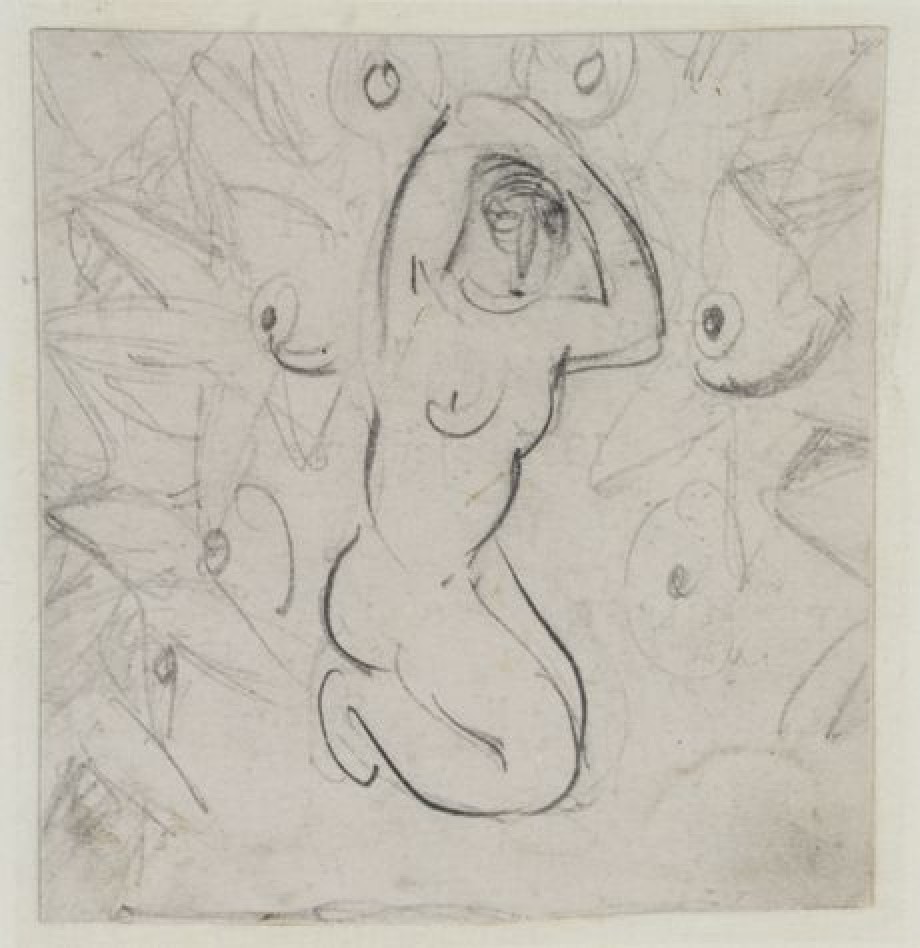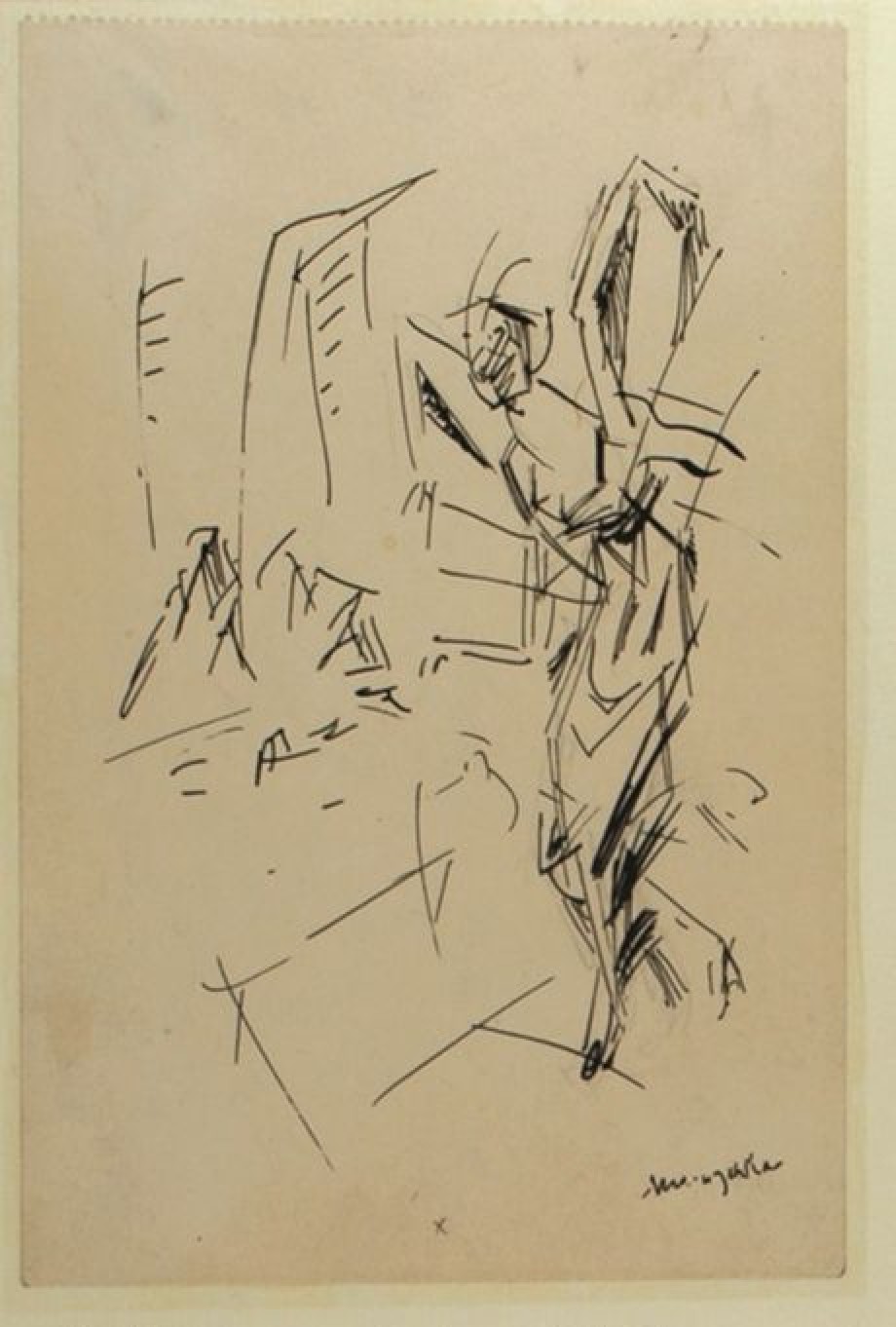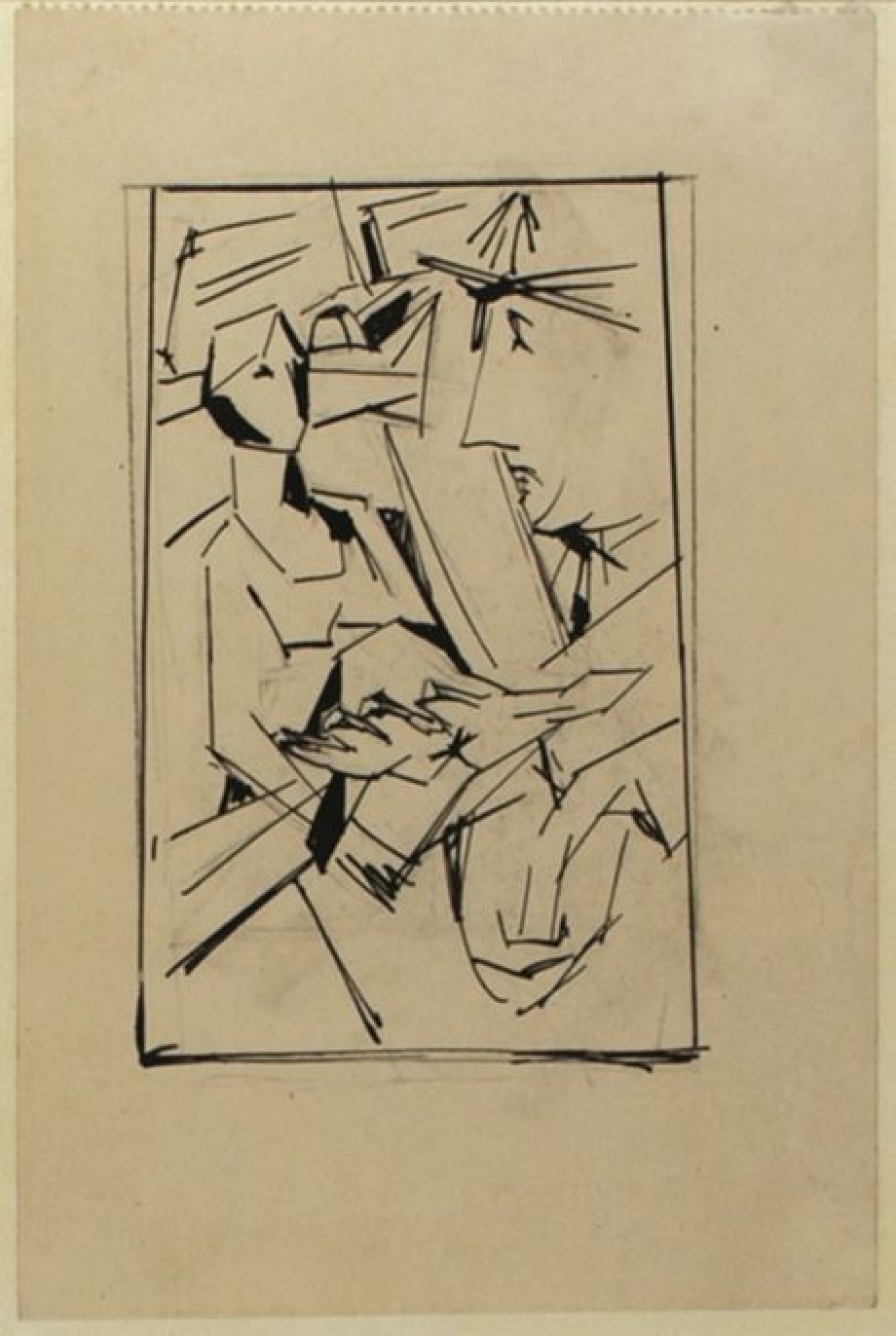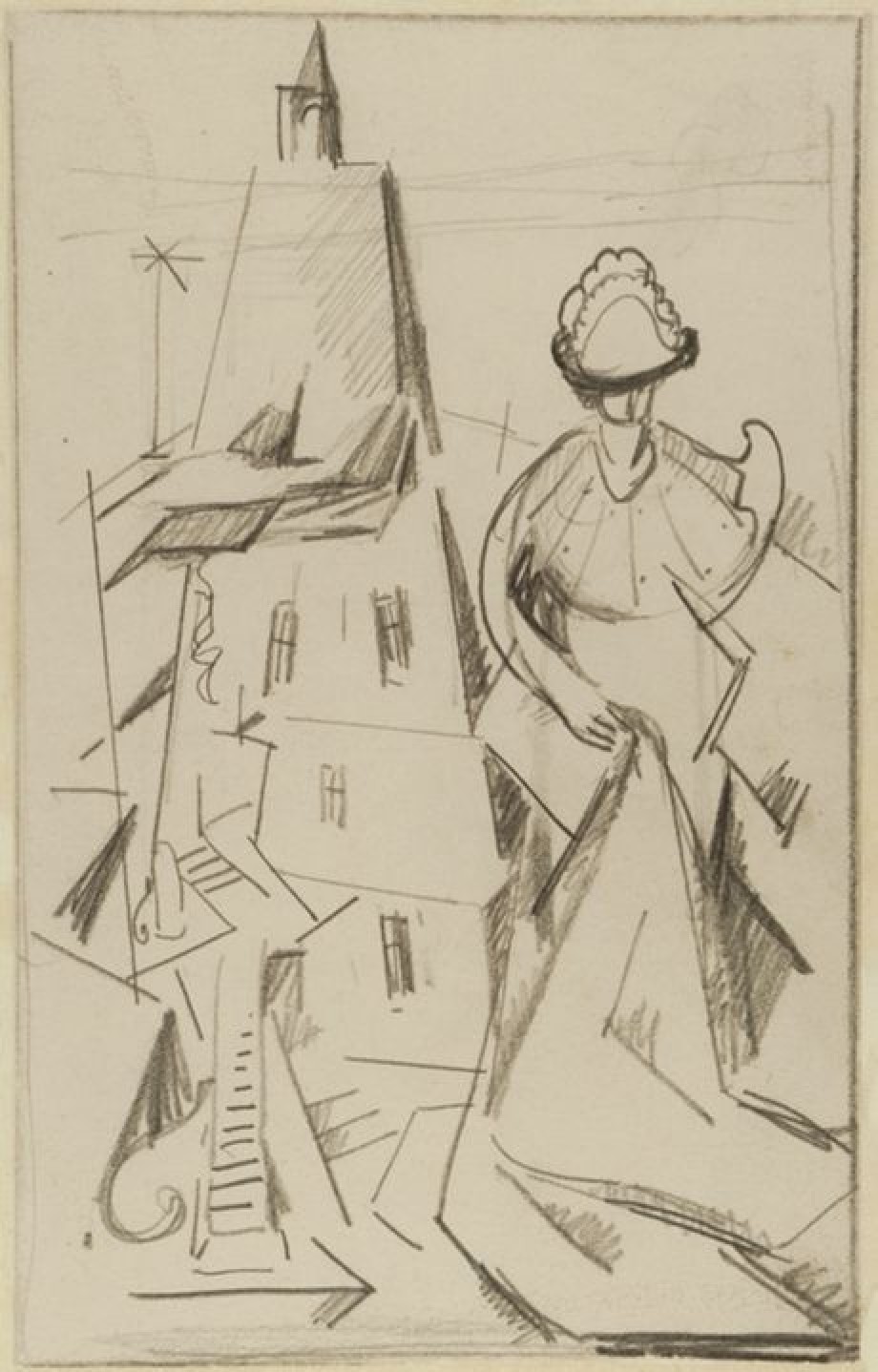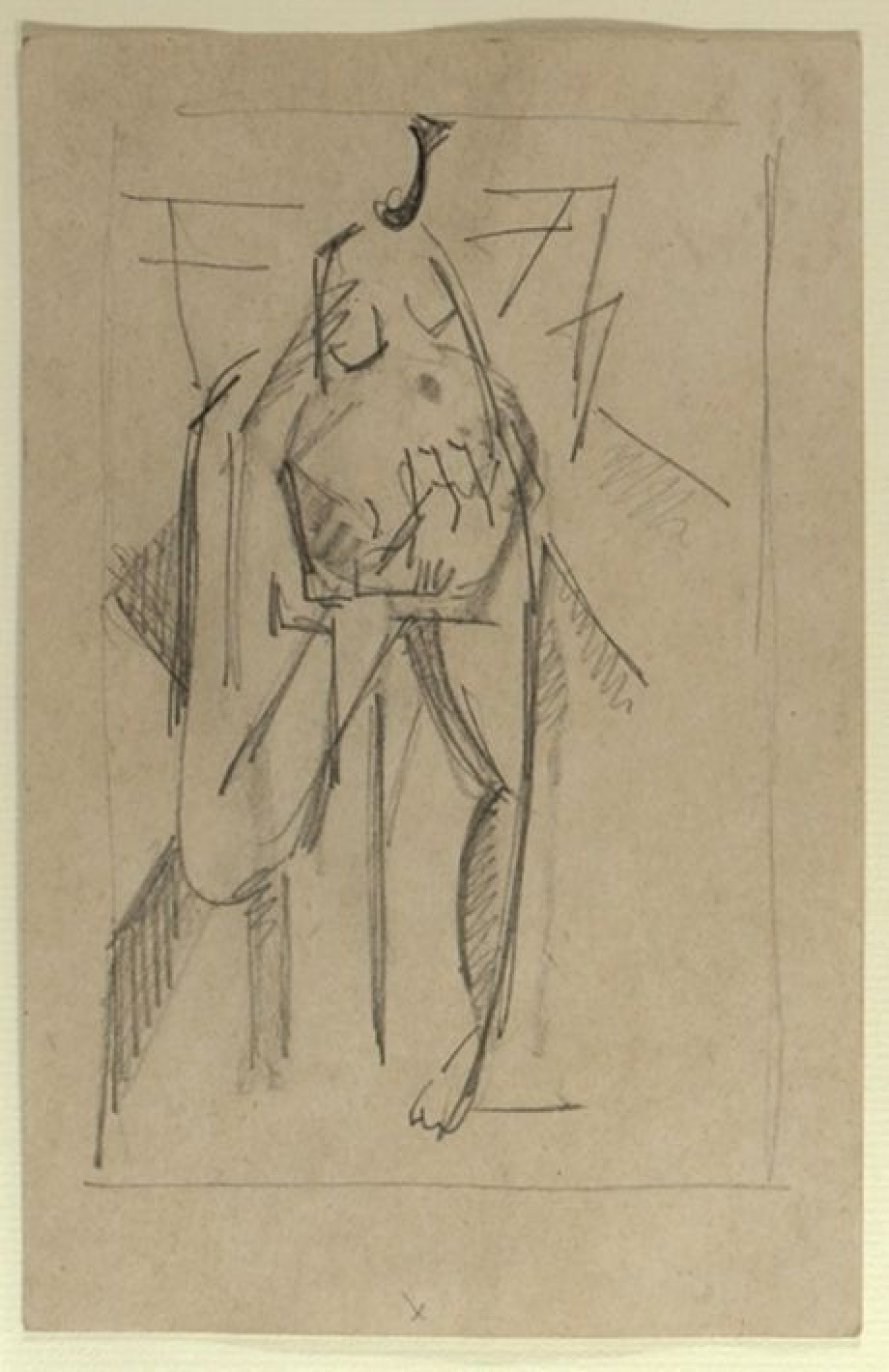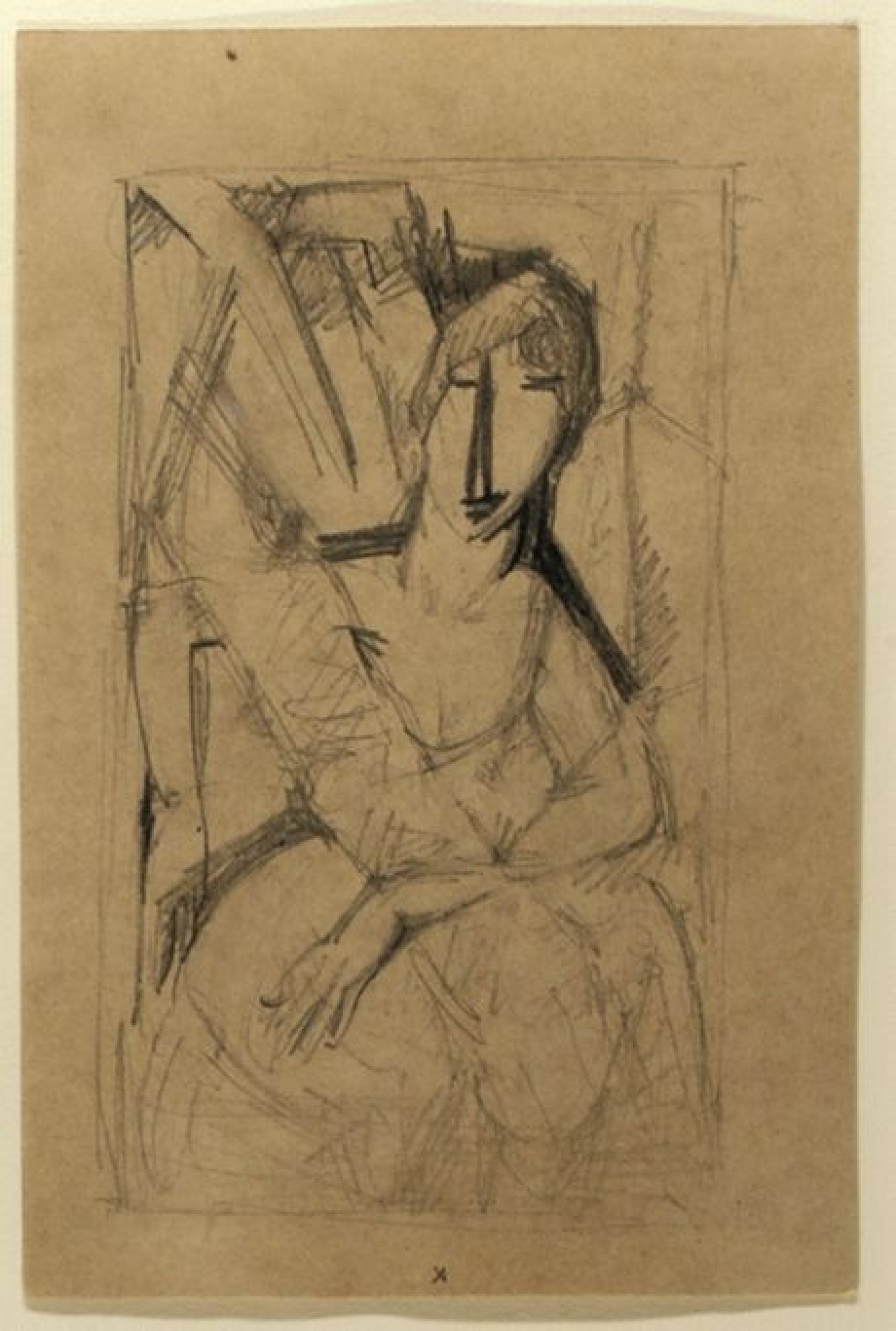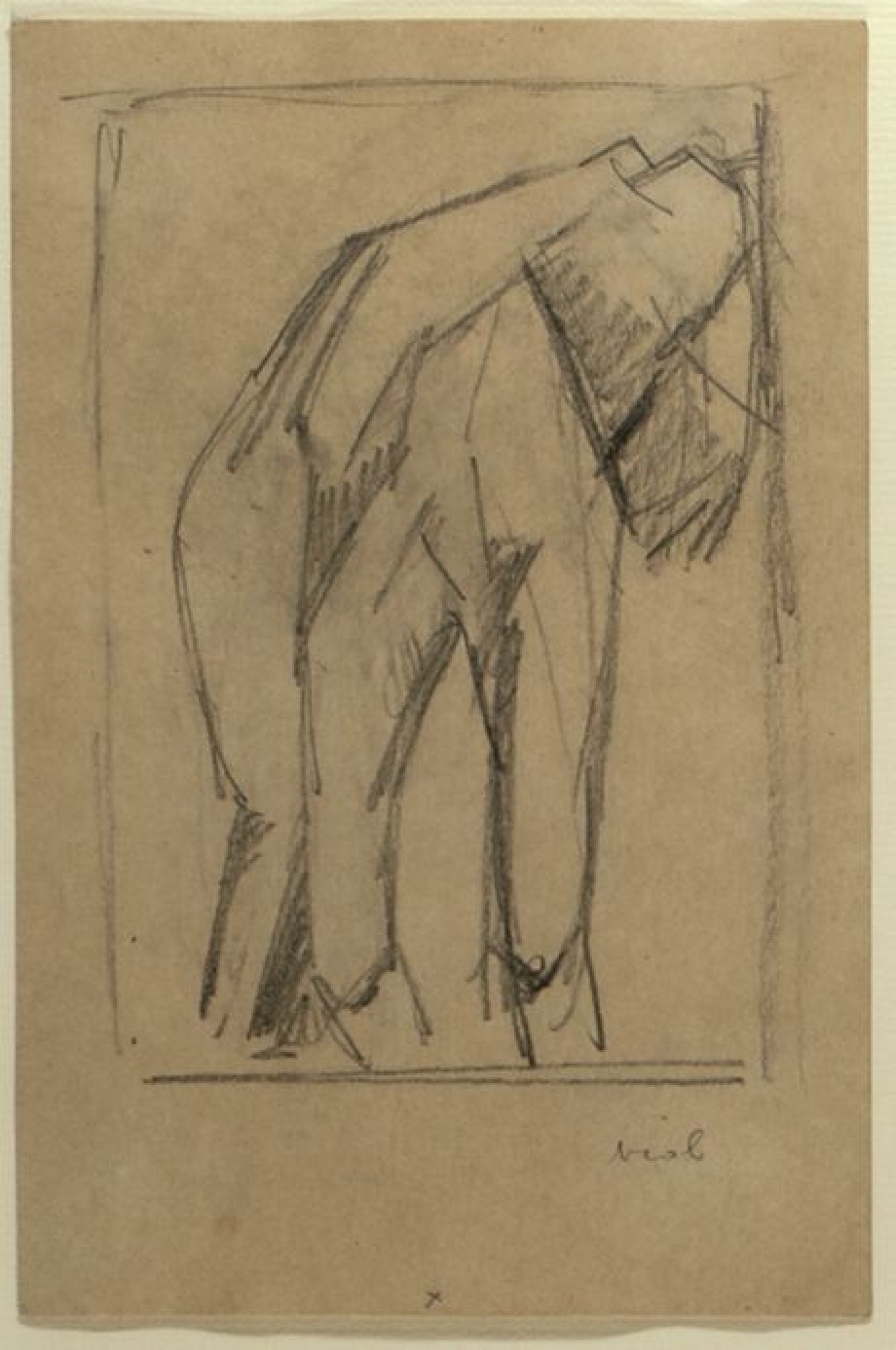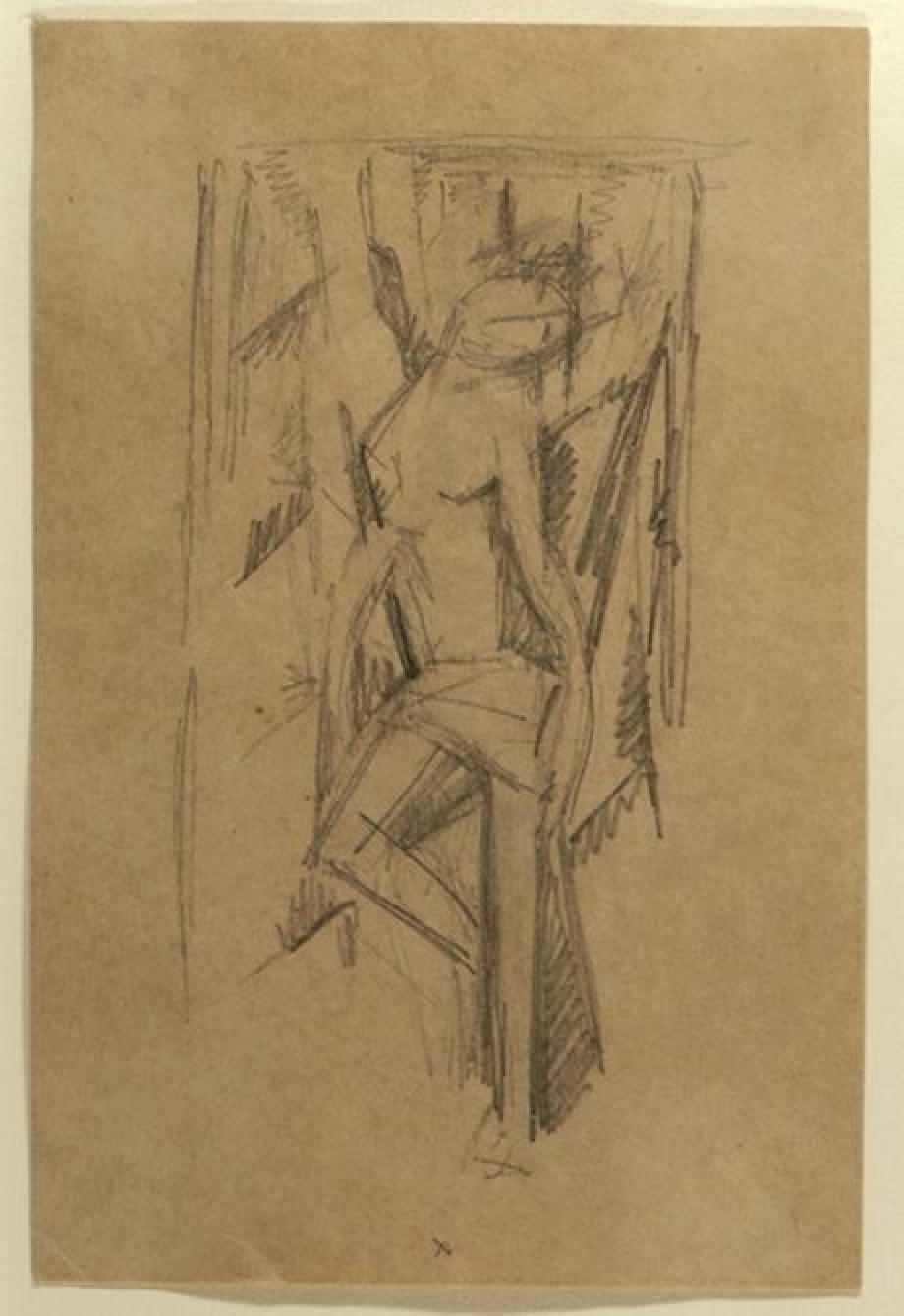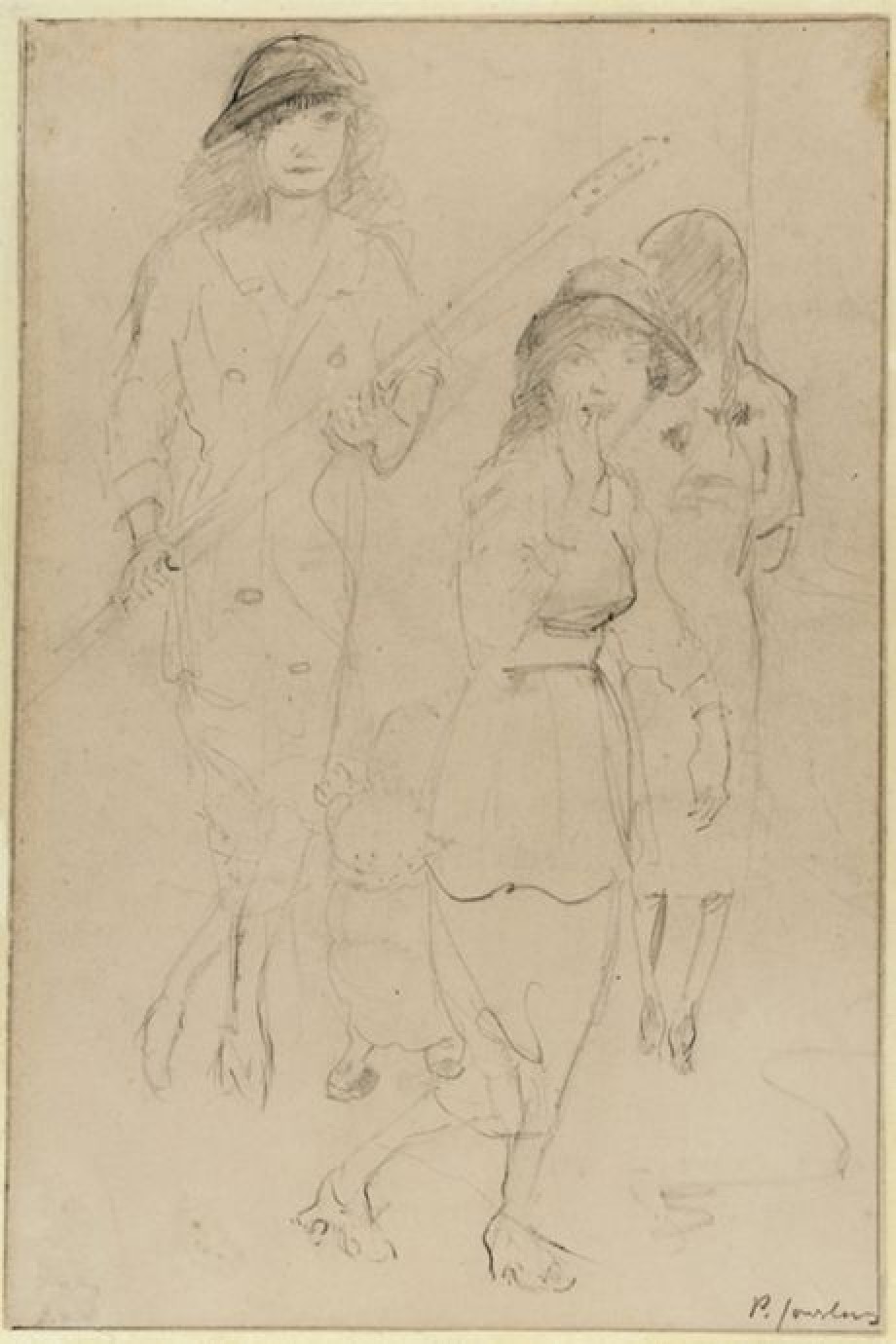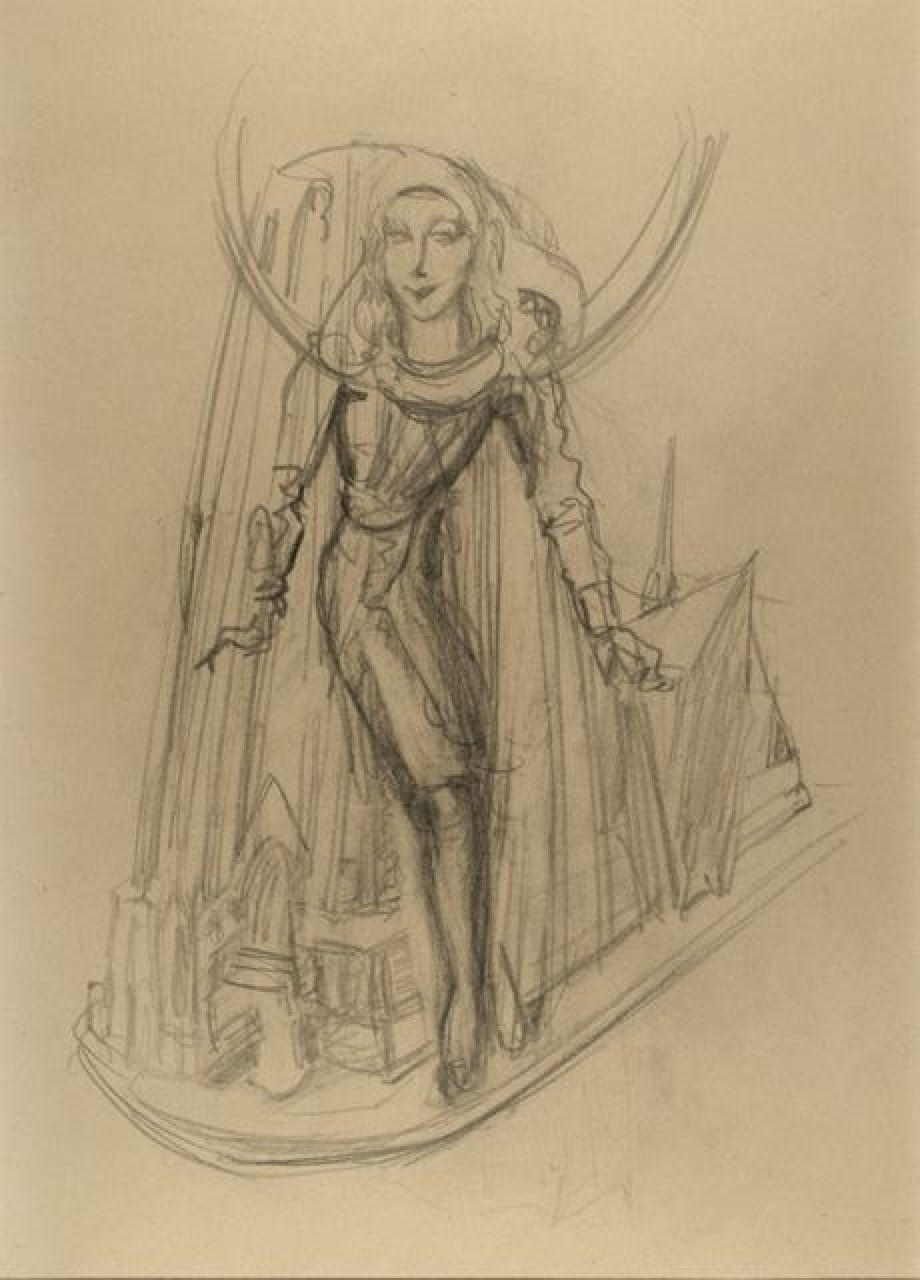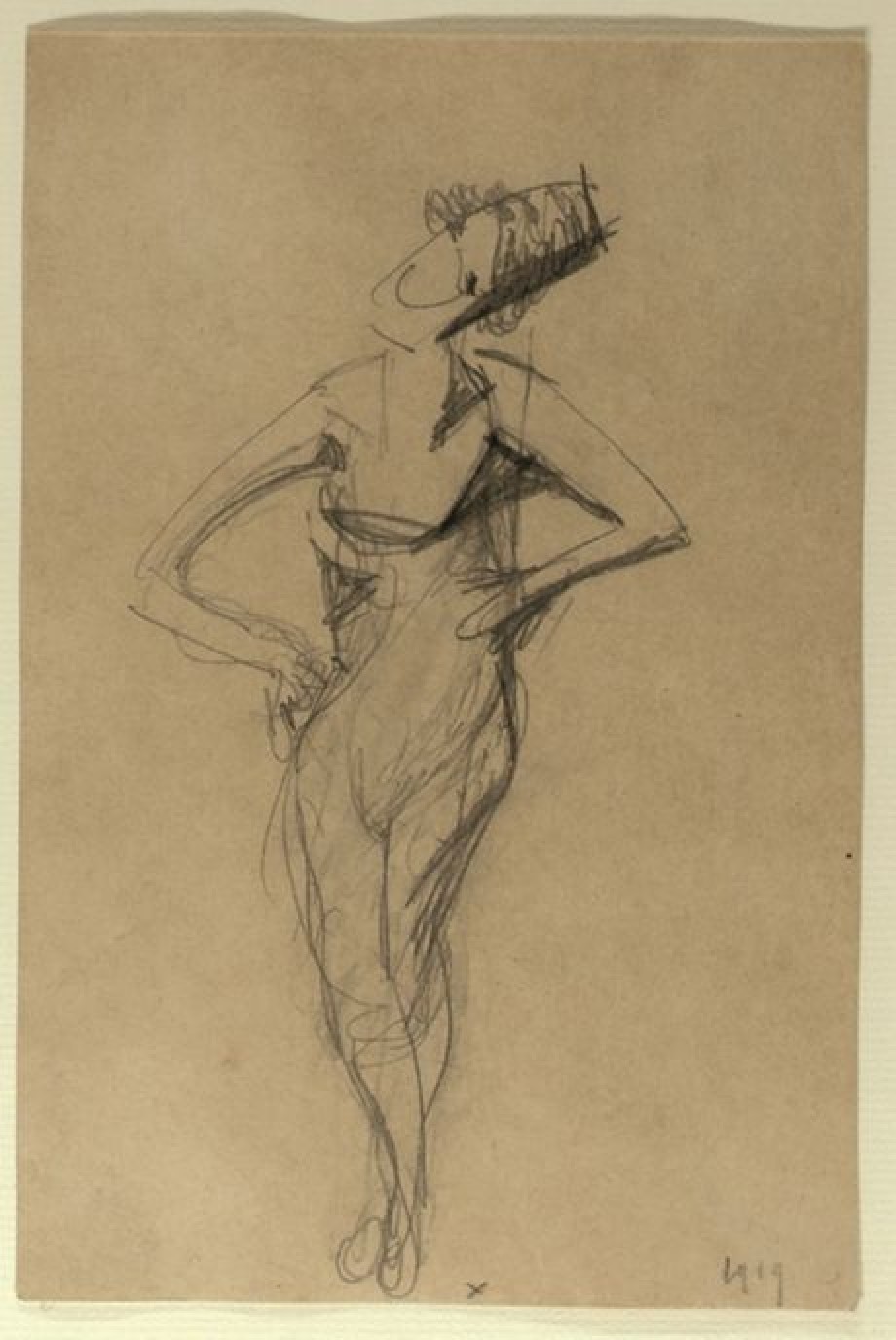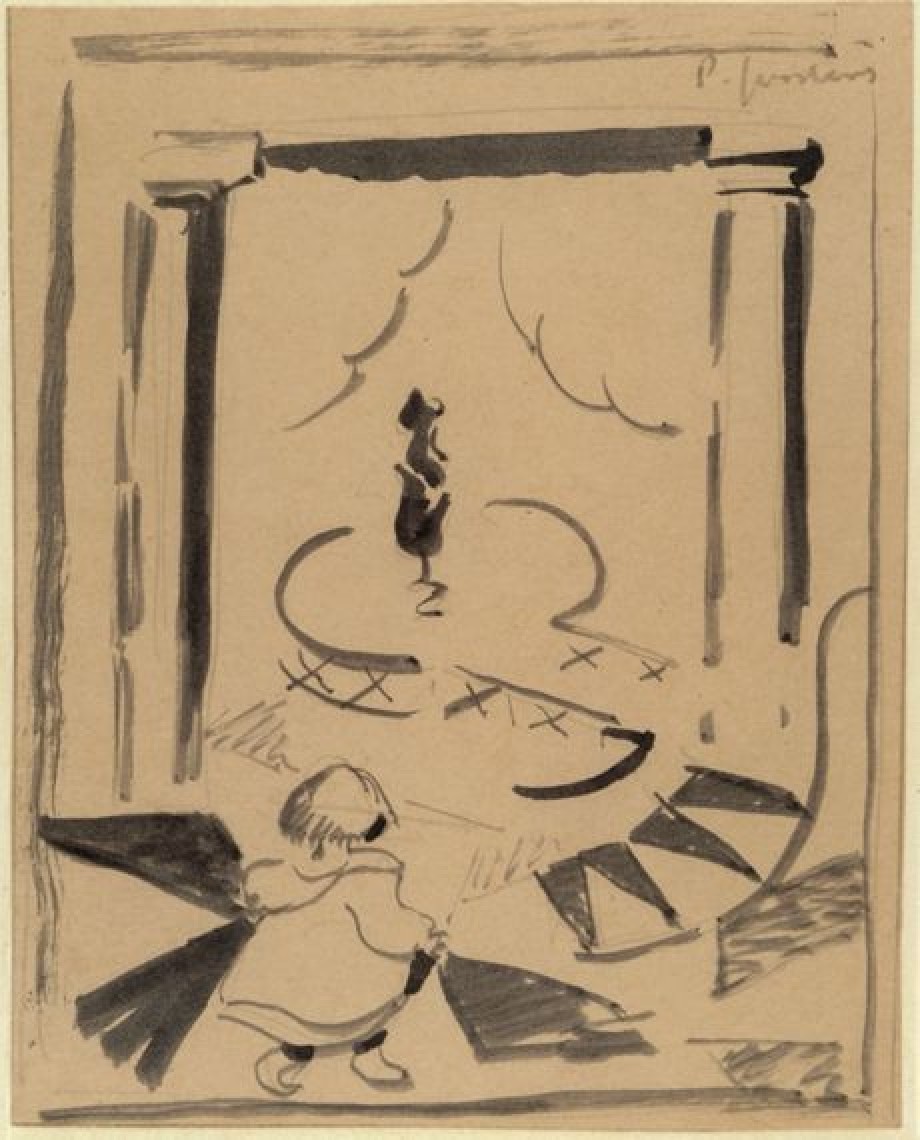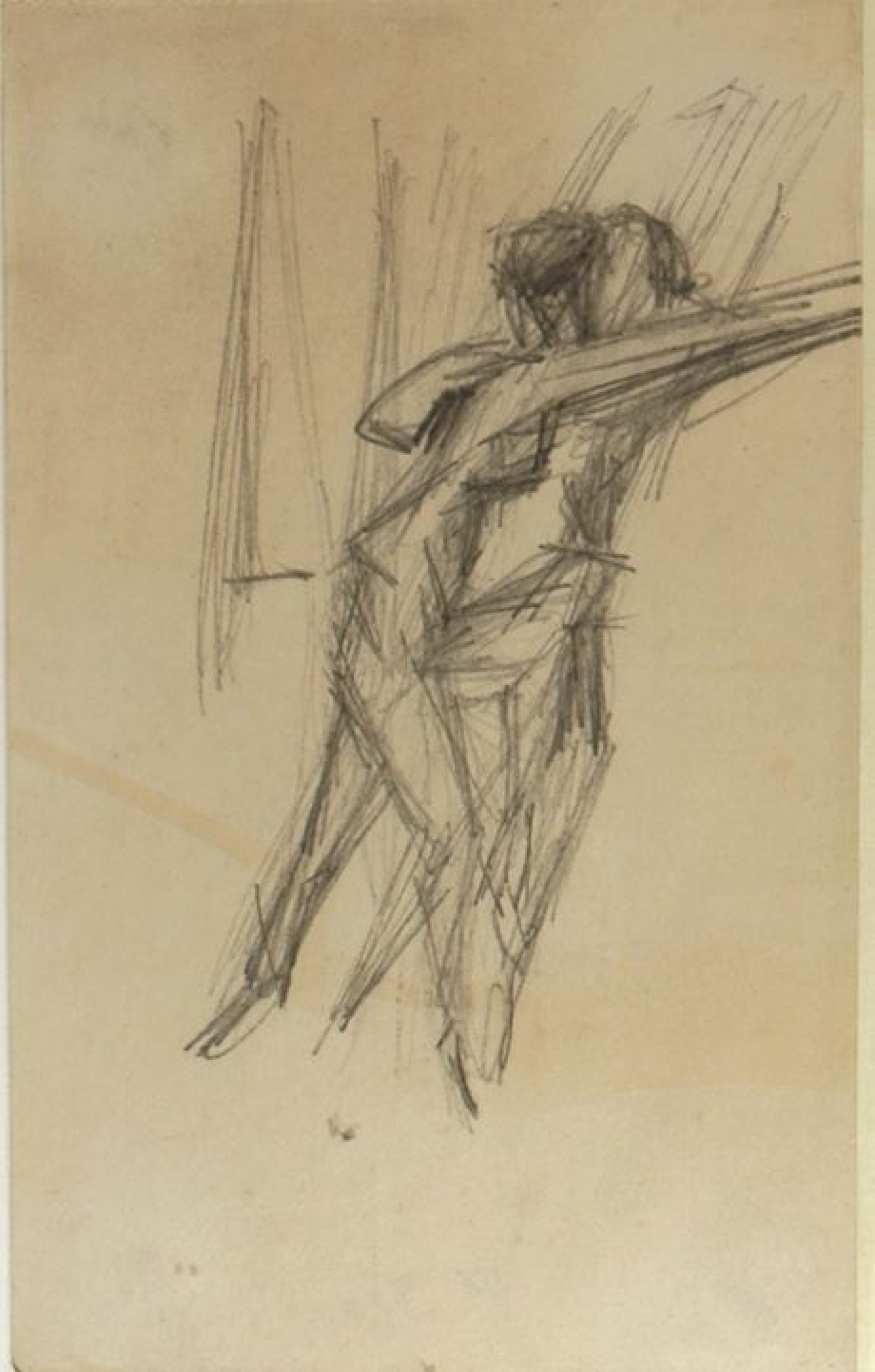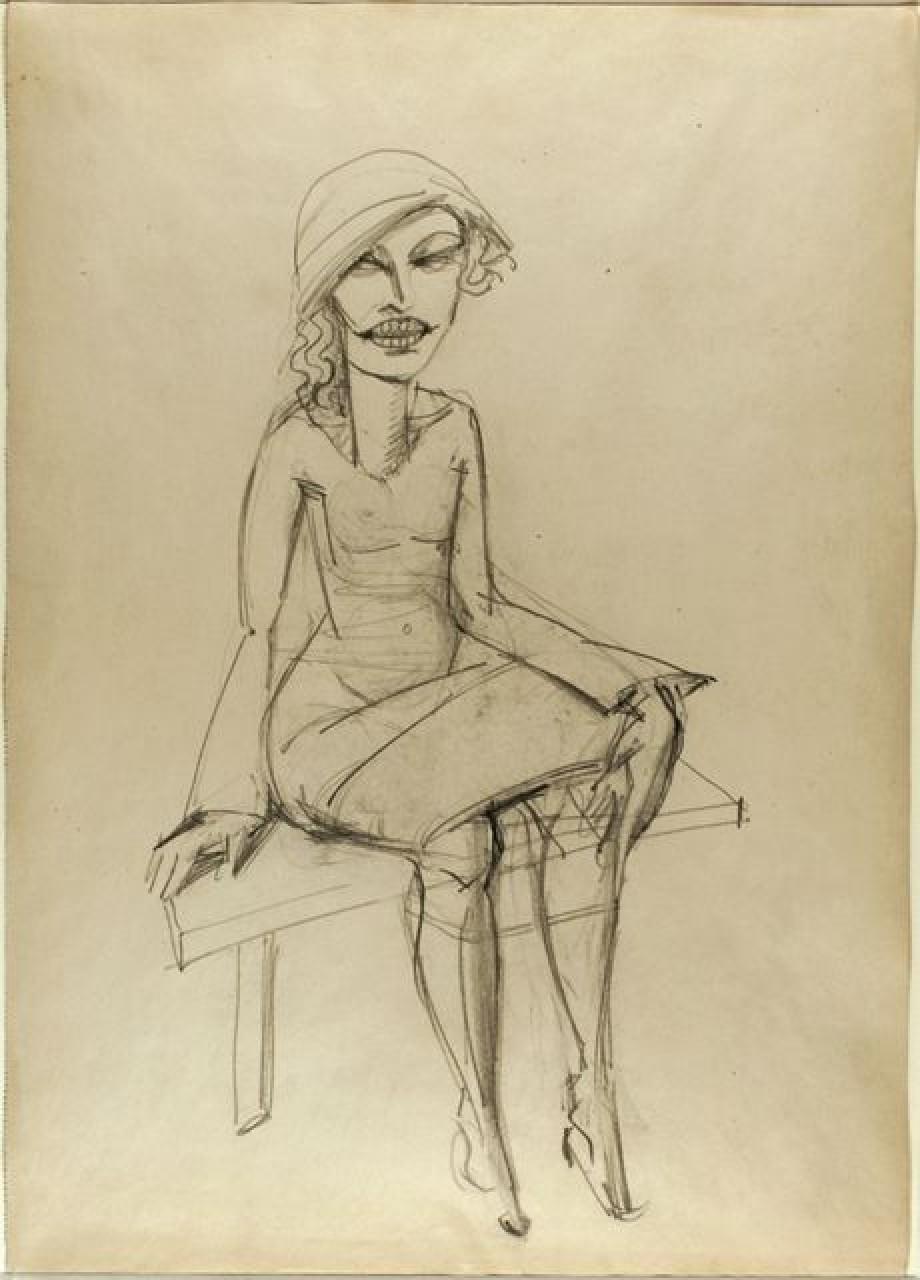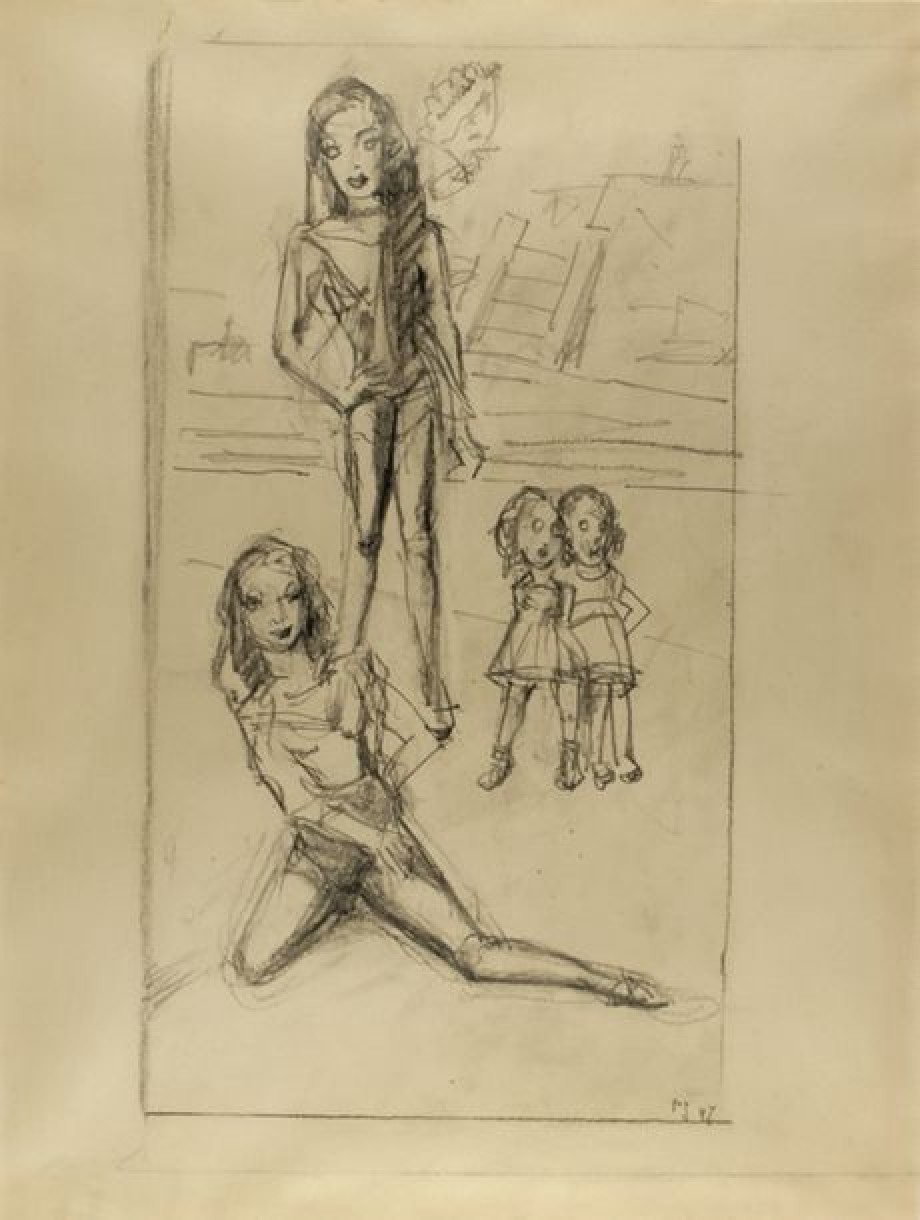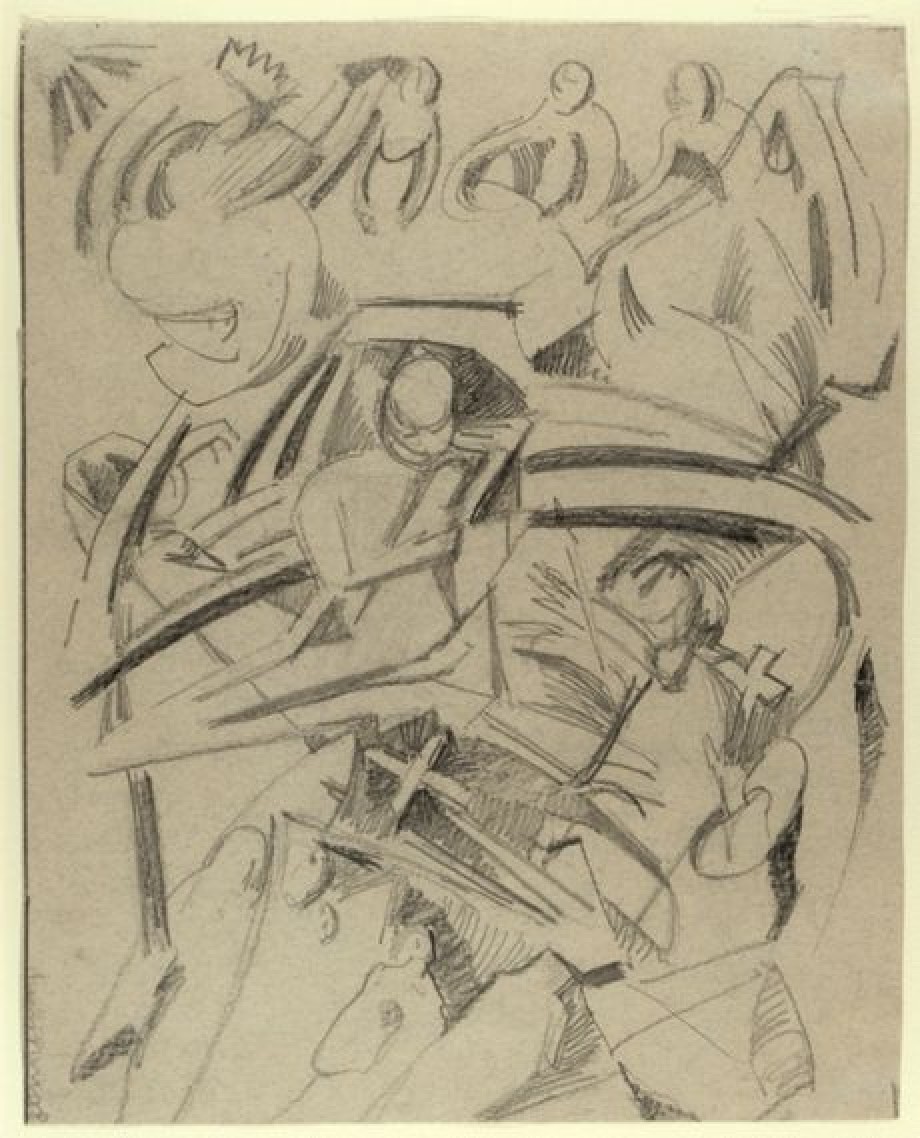
Paul Joostens
Born
1889-06-18Deceased
1960-03-24Collection
Mu.ZEE, Art Museum by the Sea , Museum of Fine Arts Ghent , Royal Museum of Fine Arts AntwerpPeriod
20th centuryMore about Paul Joostens
Paul Joostens is one of the most idiosyncratic avant-garde artists in Belgium. Joostens is important within a variety of media: paintings, drawings, collages, assemblages, and even prose and poetry. After a traditional training at the Royal Academy of Fine Arts in Antwerp, he goes in search of new pictorial mediums. As such, he is one of the first collage artists in Belgium.
Just as with many generational contemporaries, Joostens goes through the successive phases of modern art: from late-Impressionism to expressionistic experiments. Under the influence of Cubism and Futurism, he adopts the constructivist style. In 1919, he discovers Dada, a frame of mind that shall stay with him throughout his life. Primarily his assemblages create a sensation in the early 1920’s. He belongs to the intimate group centred on Paul Van Ostaijen (1896 - 1928), along with the brothers Oscar (1887 - 1970) and Floris Jespers (1889 - 1965), with whom he establishes the Bond zonder Gezegeld Papier.
Paul Joostens is a very individualistic personage throughout his entire life that refuses to cling to one style and to associate himself with certain artistic groups. His cynical, stubborn nature also manifests itself in sharp critiques and letters. Although counted amongst the pioneers of abstract art in Belgium, Joostens never severs the connection with the figuration, nor narrative. During the entire evolution in his collage art (from ‘paste technique’, ‘cartons collés’ and ‘papiers métallises’ to ‘photo-montages’), Joostens always involves the viewer in his wholly own universe that is shot through with the rich Flemish painting tradition and the image culture of his time.
After his Cubist and Dadaist period, he distances himself in 1926 from the avant-garde in order to paint in a ‘Neo-Gothic’ manner, inspired by the Flemish Primitives. And, although beginning in 1955 he makes Dadaist works again, two themes dominate his oeuvre: the feminine and the mystique. Both elements were emphasised with a double meaning, such as the Madonna with the features of a film star. The woman, at one time the holy virgin or others as prostitute and often in both configurations, will play a central role in many compositions, such as in the later series of the Poezeloezen, as he called the female figures from the Antwerp red-light district.
1889
Birth of Paulus Johannes Joostens in Antwerp on 18 June.
1902
Goes to school at the Jesuit College of Onze-Lieve-Vrouw in Antwerp. At 13, he visits the exhibition Les Primitifs flamands et l’art ancien in Bruges.
1906 - 1912
Follows the evening course at the Antwerp Academy of Fine Arts in 1906. Interns with architect Max Winders. Beginning in 1911, he continues his studies at the Higher Institute within the Academy. Amongst his fellow students are a few other future avant-gardists: Jan Kimeneij (1889 – 1981), Jozef Peeters and the brothers Oscar and Floris Jespers.
1913 - 1915
Publishes illustrations with the poetry debut of Paul Neuhuys (1897 – 1984), La Source et L’Infini. The drawings cause a polemic that shall lead to the expulsion of Neuhuys from the Atheneum.
1916
Flees with his family for a while to Ghent. Works in an impressionistic, pointillist style. Joostens becomes friends with Paul Van Ostaijen. He reviews Joostens work for the first time in the Christmas exhibition of the Art union in Het Toneel.
1917 - 1919
In the Wijngaardstraat in Antwerp he has a studio along with Jan Kiemeneij, Jozef Peeters and Edmond van Dooren (1896 – 1965).
In March of 1917, Joostens has his first individual exhibition in the Art union. The exhibition travels to the Galerie Giroux. He makes a monumental collage that is preserved today in disparate fragments.
At the end of 1917, along with Paul Van Ostaijen, Floris and Oscar Jespers, he establishes the Bond zonder Gezegeld Papier. Van Ostaijen introduces Joostens to the principles of Cubism. Van Ostaijen publishes Over het werk van Paul Joostens in Vlaamsch Leven.
A design of Joostens for Van Ostaijen’s bundle of poetry Het Sienjaal is condemned.
In 1919 an album with ten reproductions of Joostens with an introduction by Van Ostaijen appears in De Sikkel.
1920 - 1923
Corresponds with Prosper De Troyer (1880 – 1961) and Filippo Marinetti (1876 – 1944). Realises collages with a variety of materials such as pieces of fabric, paper and metal paper.
In July 1920, Joostens is banished by Van Ostaijen, who is in exile, from the ‘H. Kubistiese en Flamingantiese Kerk’.
In October 1920, Joostens exhibits along with Prosper De Troyer, Jespers and Peeters in the exhibition Oeuvres cubists et néocubistes in the Art Contemporain studio. The exhibition is organised by Sélection in Brussels.
The collaborating organisation for applied arts Novy is established by Joostens, Jos Léonard (1892 – 1957) and the brothers Jespers.
Publishes graphic work in Ruimte and Sélection, among others. In 1921, Joostens’ Dadaist inspired text Salopes appears in Ça Ira.
Exhibits at the 2nd Congress for Modern Art as well as at the Exposition organisée par la Revue Ça Ira Cubo-futurist and abstract works.
In 1923, a large retrospective takes place in the Zaal Renis in Antwerp. Georges Marlier (1898 – 1968) ensures for the first monographic publication on Joostens’ illustrative work.
1924 - 1929
Travels to Paris and marries Madeleine Millot (Mado) there. Michel Seuphor is witness and immortalises the wedding with his Dadaist report Mariage filmé. The marriage lasts until 1931.
Joostens comes into contact with the Belgian Surrealists René Magritte and E.L.T. Mesens (1903 – 1971). In 1926, he stops with the avant-garde experiments and follows the path of a personal mystical Neo-gothic world. In 1929 he aligns himself with the Catholic Pilgrim movement where the mild modernists Eugeen Yoors (1879 – 1975) and Flor Van Reeth (1884 – 1975) are active, among others.
1932 - 1939
After Michel Seuphor publishes fragments from their correspondences, Joostens breaks off the friendship.
Beginning in 1937, he makes collages that he calls ‘photomontages’.
In 1939, he publishes La Vierge Boréale, suivi de Christ.
1944 - 1945
On the occasion of his solo exhibition in the Stedelijk Kunstsalon, the publication Paul Joostens appears in the series Kunstenaars van Heden. During the V-bombings he remains for two months with the family van Grootel in Hoogboom.
1947 - 1956
Is operated on in the Sint Camille Hospital in Antwerp. The ambiguous Poezeloezen series originates in this period.
1957
Exhibits an overview of his collages during Papiers collés 1920-1957 in the Galerie Saint-Laurent in Brussels.
1958 - 1960
Participates in the collage exhibition of the Centre International de l’Actualité Fantastique et Magique (CIAFMA) in Antwerp, Brussels and Paris. After various moves, he settles in the Venusstraat 44 in Antwerp where he shall stay until his death.
1960
Paul Joostens dies, as a lonely, forlorn man, on 24 March in the Stuivenberg Hospital in Antwerp. His oeuvre is scattered after his death, despite the fact that Joostens himself provided a foundation to promote his literary and illustrative work.
Text: Sergio Servellón
